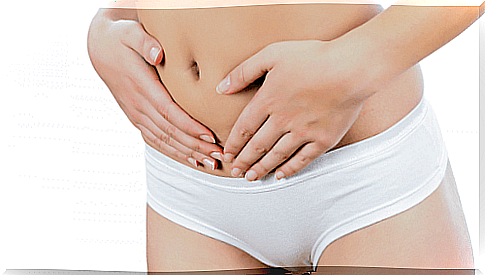Polycystic Ovary Syndrome: Causes, Symptoms And Therapy

Polycystic ovary syndrome is a disease in women that arises from hormonal imbalances. This alteration involves several changes in the menstrual cycle, difficulty in getting pregnant and possible development of ovarian cysts. In some cases, it can even lead to infertility.
Causes of polycystic ovary syndrome (PCOS)
The syndrome is associated with changes in hormone levels. These make it difficult for the ovaries to release mature eggs. But what are these imbalances due to? Usually, the eggs are released two weeks after the start of the menstrual cycle. However, periods and times vary from woman to woman.
When you have polycystic ovary syndrome, the mature eggs are not released and remain in the ovaries. They can be present in large quantities and surrounded by some liquid.
Symptoms of the polycystic ovary
In most cases, polycystic ovary syndrome is diagnosed in women between the ages of 20 and 30. However, adolescent girls can also suffer from it. Symptoms often appear from the first menstrual cycle. In general, women with this disorder have a sister or mother who exhibits similar symptoms.

Symptoms were discussed in different contexts and meetings. An example is the American Congress of Obstetrics and Gynecology. According to experts, there are many types of symptoms and not all women suffering from polycystic ovary syndrome have the same.
Symptoms are also likely to change over time . According to the Congress, among the best known are the following.
- Acne.
- Growth of hair on the breast. They may also be present on the abdomen and in some parts of the face.
- Weight gain.
- Irregular menstrual cycle. It is usually intermittent and can vary in intensity.
- Loss of fertility.
- Appearance of small cysts in the ovaries.
More serious consequences
Polycystic ovary syndrome can lead to several complications.
- Diabetes. According to statistics, 50% of women with this disorder have the possibility of developing diabetes. Often, it appears before the age of 40.
- Cholesterol and overweight. Women affected by the syndrome have higher cholesterol levels and are more prone to hypertension. To these we must also add anxiety and depression.
Diagnosis
Diagnosis of the syndrome is quite simple. It is done through a physical exam. During the analysis, the pelvic area is evaluated, an ultrasound of the ovaries is done and hormone levels are checked. During the tests it is possible to observe if the ovaries are larger than normal and if there is an unusual percentage of follicles.
Therapy
It is now well known that polycystic ovary syndrome still has no cure. However, the symptoms can be treated. The birth control pill can regulate the menstrual cycle.

At this point it is normal for you to wonder what effects the pill can have on a woman with the syndrome. In addition to making the cycle regular, acne and hair growth decreases . This is due to the reduction in androgen levels.
Another positive consequence of the use of oral contraceptives is the periodic detachment of the inner lining of the uterus. Thus the risk of endometrial cancer decreases. Even slight weight reduction can help fight hormonal imbalances and other diseases. This is the case with high blood pressure, diabetes and high cholesterol.
Women who want to have a baby and suffer from the syndrome have a solution. They can undergo surgery which is done laparoscopically. An ovary is altered through a small needle that emits an electrical discharge. This discharge destroys a part of the tissue where testosterone is produced. By lowering the level of this hormone, the chances of having regular ovulation are increased.









